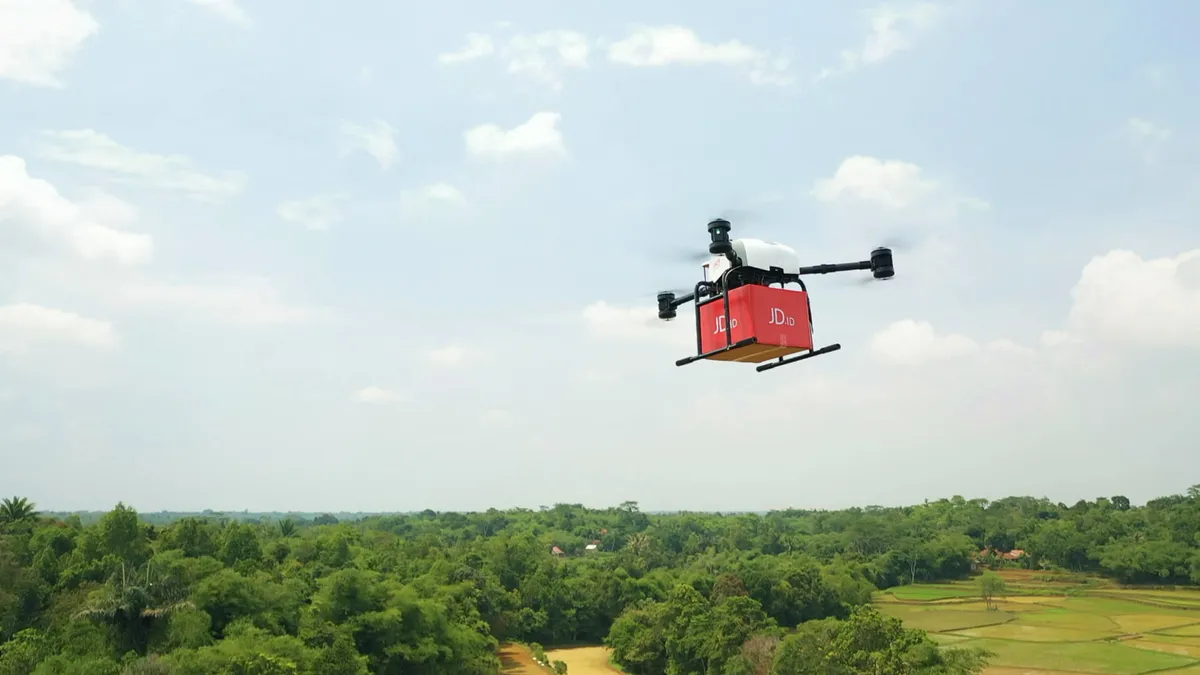Dive Brief:
- The construction industry in 2020 adopted in one year what would have normally taken three, thanks to the COVID-19 pandemic, according to commercial real estate services firm JLL's latest "State of Construction Tech" report.
- This acceleration was most evident in several high-impact areas of construction tech — digital collaboration, scanning, safety, wearables, building information modeling (BIM) and computer-aided design (CAD). Achieving moderate growth were technologies related to drones, jobs and employment, robotics, augmented and virtual reality and digital twins.
- In the next few post-pandemic years, JLL estimated that the foundational technologies, those that form the basis of any tech program, will be BIM, CAD, artificial intelligence and digital collaboration. Other technologies that will have a significant impact on construction in the future are drones, scanning and modular construction.
Dive Insight:
Modular construction, JLL said, did not benefit significantly from the pandemic, although since it takes place in a factory setting, the process can be engineered to maintain social distancing. The relatively high risk of modular construction projects, however, has prevented wider adoption of the technology, and the industry faces some challenges ahead as the hotel industry, one of the biggest implementers of modular construction, sees projects delayed or canceled in the wake of the pandemic.
But as far as the technology that contractors have adopted this year, once the pandemic is behind us, said Henry D’Esposito, senior analyst for construction research at JLL, most of it should “stick around” post-pandemic.
“The few exceptions are categories where technology did not make a project more efficient,” he said, “but only addressed a pandemic-specific concern. A primary example are wearables and tracking systems focused on maintaining social distancing or contact tracing, which are likely to see adoption decline after the pandemic is over.”
Others argue that site-screening check-in apps, which launched during the pandemic to act as electronic gatekeepers for potentially infected workers, will still be used after COVID-19 is curtailed. For instance, Lafayette, California-based Safe Site Check In, an app that asks workers questions about possible exposure before they come to work, said its customers are also using it to eliminate paper-based processes and to track hours worked.
"It's an app they say they're planning to use, even after a vaccine is available," said Kathy Keating, a spokesperson for the firm, in an email.
The pandemic taught the construction industry a big lesson as well, D’Esposito said, and that is how technology can create an advantage for those who are willing to invest and learn how to use it.
"The jump in tech adoption this year has exacerbated the gap between those who are leading in the adoption of new tools,” he said, “and those who are falling behind. Those who already had the technology in place had a much easier time moving projects forward despite the disruption this year.”
Technology has also become increasingly important for building inspectors. As remote jobsite inspections have become more prevalent — and necessary in order to maintain social distancing — in September, the International Code Council (ICC) issued recommendations for their implementation.
One thing that isn’t likely to change after the pandemic is the labor shortage and the resulting high costs, and this is another instance where those who have invested in technology have an opportunity to come out ahead.
“The biggest driver of tech adoption has always been the high cost of labor, and that will not change in the years ahead,” D’Esposito said. “In the years after the pandemic, with labor shortages expected to worsen and wages expected to rise, the cost-benefit analysis for adding construction tech tools that can shorten schedules and use labor more efficiently will only tilt further toward the growing return on investment for new tech.”














